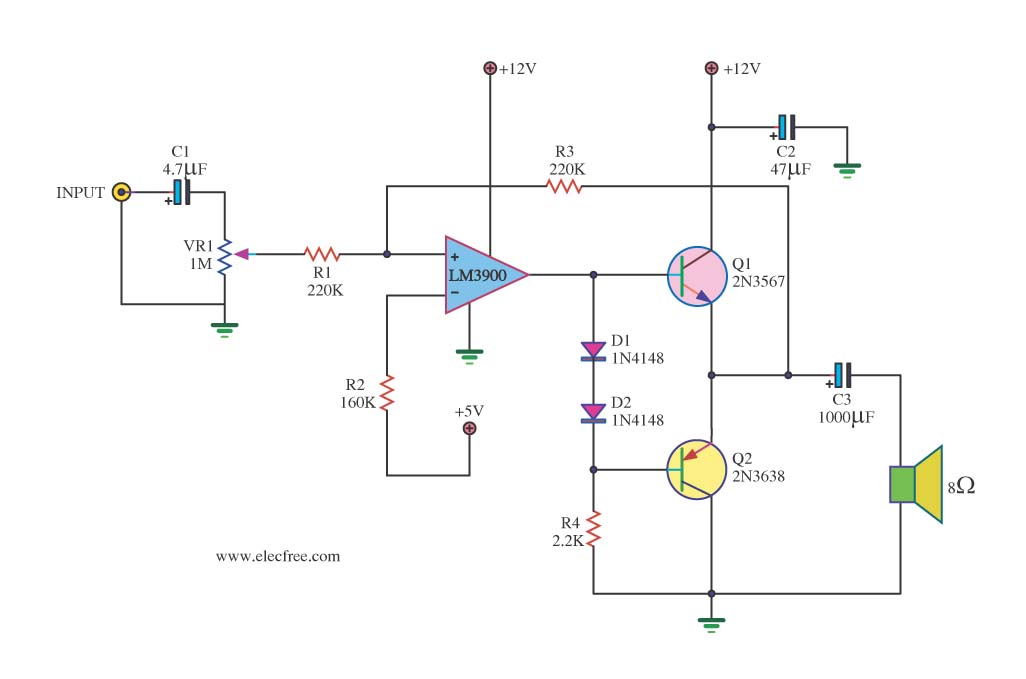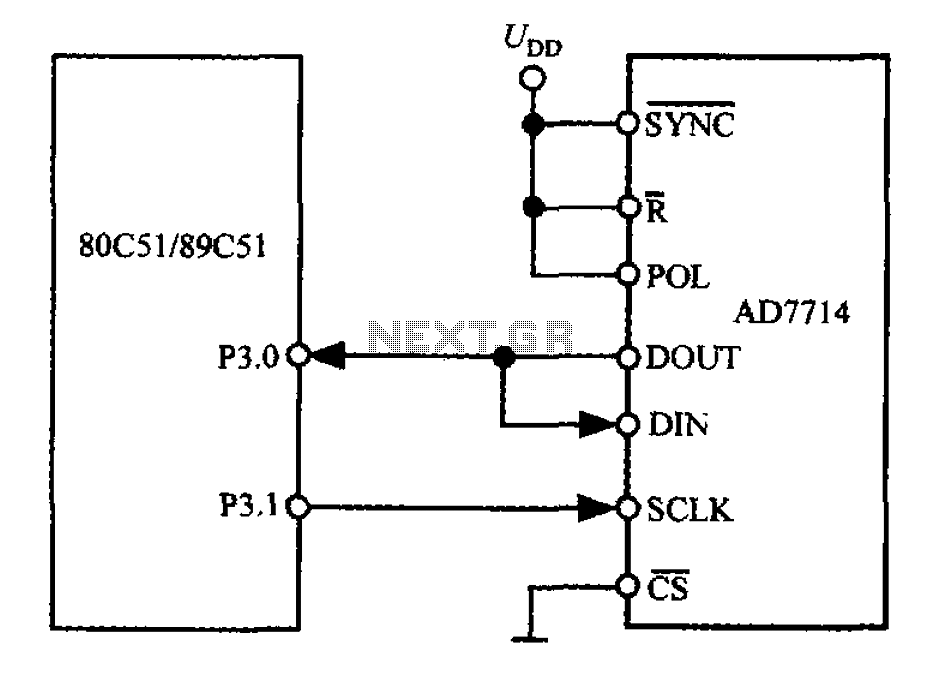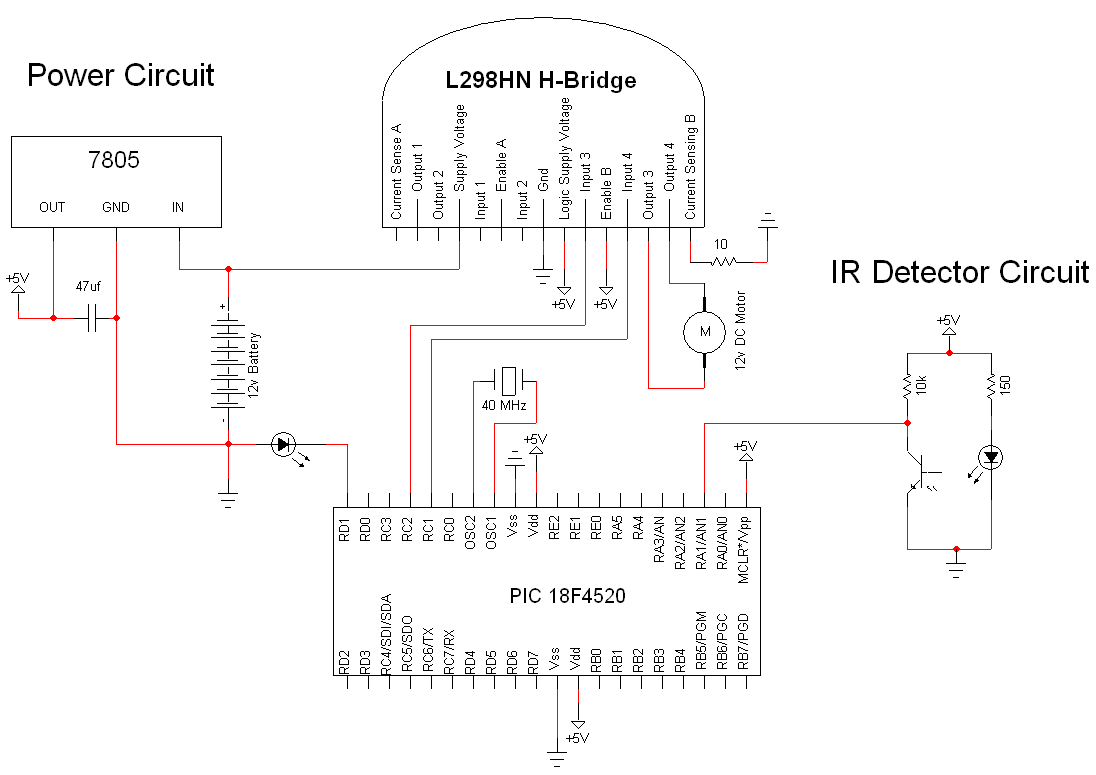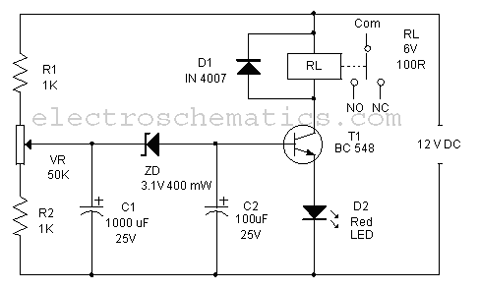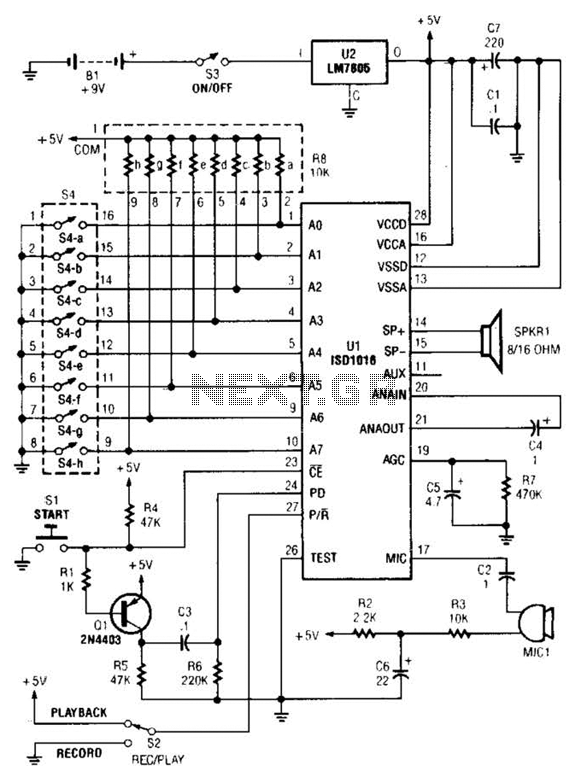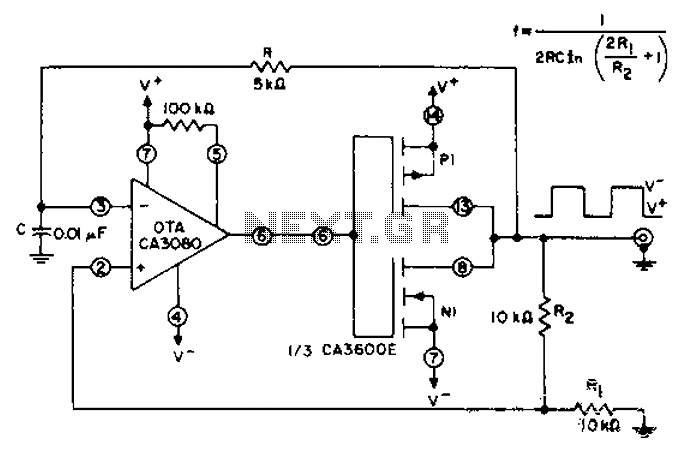
Typical DA conversion circuit 8
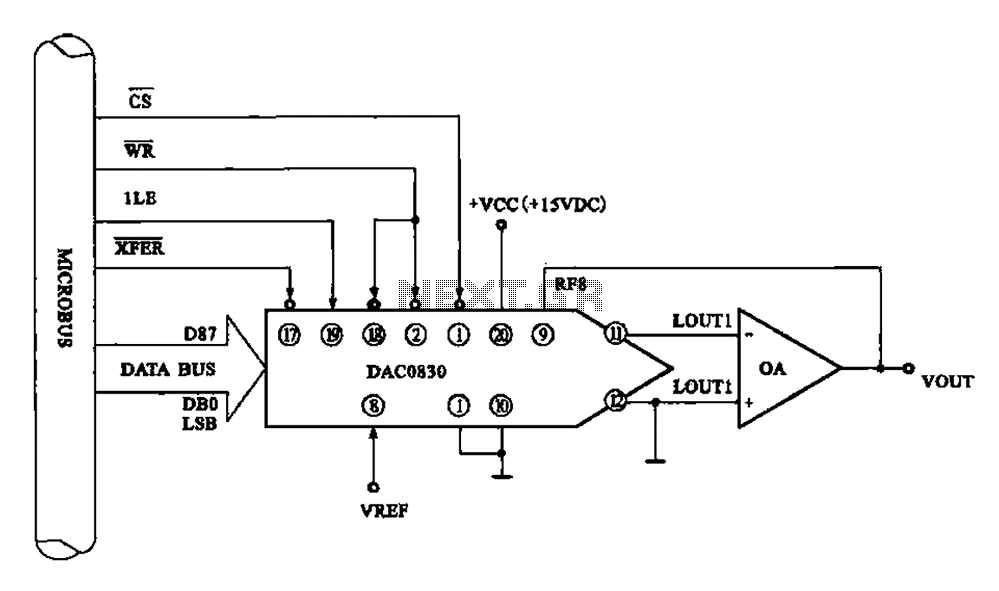
Figure 8 illustrates a typical digital-to-analog (D/A) conversion circuit that utilizes the DAC0830/DAC0832 chip. The microprocessor outputs an 8-bit digital signal, which is converted into an analog signal.
The D/A conversion circuit depicted employs the DAC0830/DAC0832, which is a dual 8-bit digital-to-analog converter. This device is designed to convert binary input signals into corresponding analog voltages, facilitating the interface between digital systems and analog environments.
The circuit typically includes a microprocessor that generates an 8-bit digital signal, which serves as the input for the DAC. The DAC0830/DAC0832 interprets this digital input and outputs an analog voltage proportional to the digital value. The output voltage can range from 0 to a maximum value determined by the reference voltage supplied to the DAC, allowing for precise control over the analog signal produced.
In addition to the DAC chip, the circuit may incorporate passive components such as resistors and capacitors to filter the output signal and stabilize the power supply. A reference voltage source is also essential, as it sets the scale for the output voltage range. The circuit configuration may vary depending on the desired application, such as audio signal generation, waveform synthesis, or control systems.
To ensure optimal performance, it is crucial to consider factors such as the power supply voltage, load impedance, and signal integrity. Proper layout and grounding practices are also important to minimize noise and ensure accurate signal conversion. Overall, the DAC0830/DAC0832 provides a reliable solution for converting digital signals into analog outputs in various electronic applications.8 shows a typical D/A conversion circuit, which uses DAC0830/DAC0832 chip, the microprocessor will output 8 -bit digital signal into an analog signal.
The D/A conversion circuit depicted employs the DAC0830/DAC0832, which is a dual 8-bit digital-to-analog converter. This device is designed to convert binary input signals into corresponding analog voltages, facilitating the interface between digital systems and analog environments.
The circuit typically includes a microprocessor that generates an 8-bit digital signal, which serves as the input for the DAC. The DAC0830/DAC0832 interprets this digital input and outputs an analog voltage proportional to the digital value. The output voltage can range from 0 to a maximum value determined by the reference voltage supplied to the DAC, allowing for precise control over the analog signal produced.
In addition to the DAC chip, the circuit may incorporate passive components such as resistors and capacitors to filter the output signal and stabilize the power supply. A reference voltage source is also essential, as it sets the scale for the output voltage range. The circuit configuration may vary depending on the desired application, such as audio signal generation, waveform synthesis, or control systems.
To ensure optimal performance, it is crucial to consider factors such as the power supply voltage, load impedance, and signal integrity. Proper layout and grounding practices are also important to minimize noise and ensure accurate signal conversion. Overall, the DAC0830/DAC0832 provides a reliable solution for converting digital signals into analog outputs in various electronic applications.8 shows a typical D/A conversion circuit, which uses DAC0830/DAC0832 chip, the microprocessor will output 8 -bit digital signal into an analog signal.
Warning: include(partials/cookie-banner.php): Failed to open stream: Permission denied in /var/www/html/nextgr/view-circuit.php on line 713
Warning: include(): Failed opening 'partials/cookie-banner.php' for inclusion (include_path='.:/usr/share/php') in /var/www/html/nextgr/view-circuit.php on line 713
